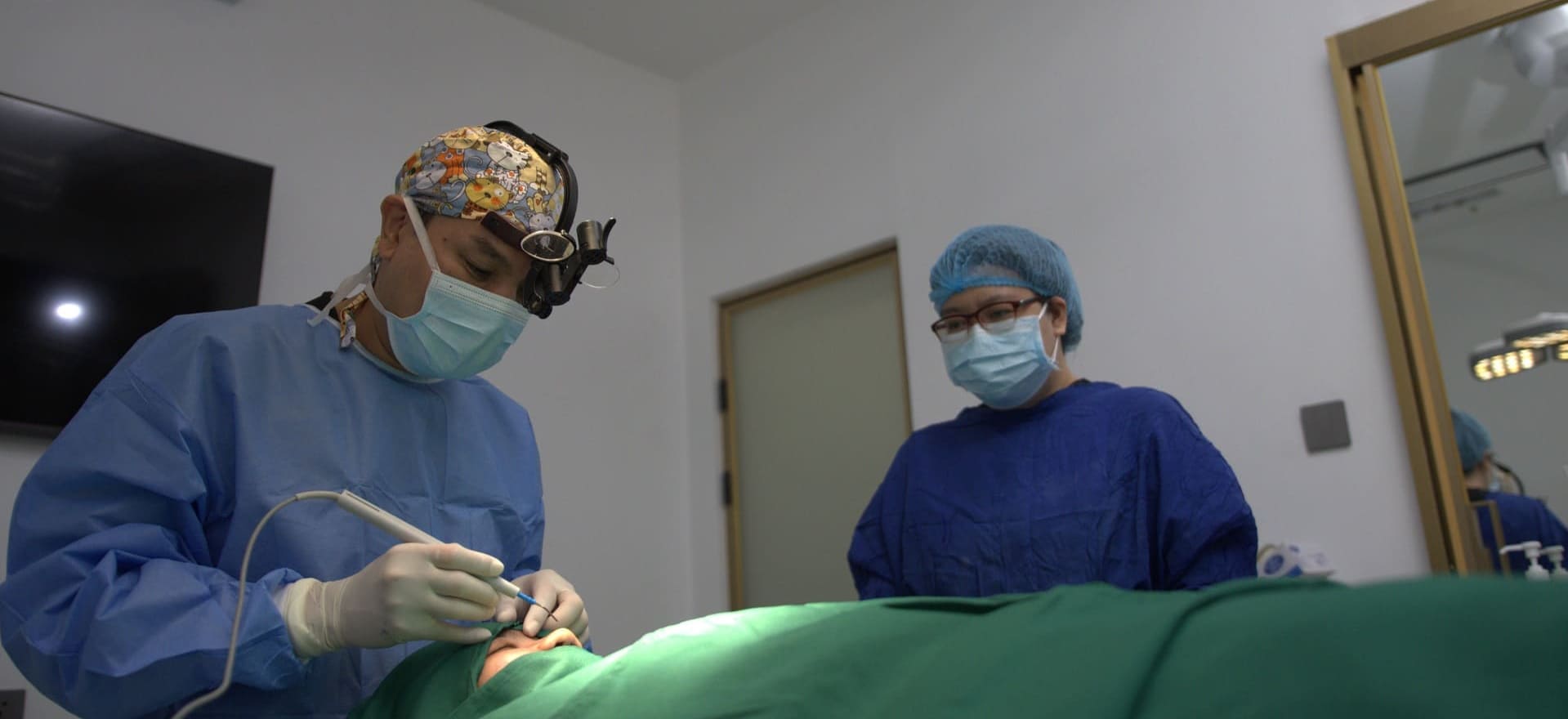
Fat Transfer - Face Fami
videos
What is Fat Transfer - Face Fami?
Facial fat transfer, also known as FAMI (Fat Autografting Muscle Injection), is an advanced facial rejuvenation procedure that uses the patient’s own fat to restore volume, smooth wrinkles, and enhance facial contours. By harvesting fat from areas such as the abdomen or thighs and strategically injecting it into the face, this technique offers natural, long-lasting results without the need for synthetic fillers.
What sets FAMI apart from traditional fat grafting is its unique approach of targeting the deeper structural layers of the face—including muscle and deep fat compartments—rather than injecting solely beneath the skin. This method more accurately replicates the fullness and proportions of a youthful face by restoring volume exactly where it is lost due to aging or weight loss.
The procedure begins with gentle liposuction to harvest fat, usually from the abdomen, thighs, or flanks. The collected fat is then purified to isolate healthy, viable fat cells. Using highly precise injection techniques, the surgeon reintroduces the fat into specific facial areas such as the cheeks, temples, under-eyes, jawline, lips, or nasolabial folds.
Facial fat transfer is ideal for those seeking to correct volume loss, improve facial symmetry, and smooth fine lines or hollow areas with a natural, biocompatible solution. As a portion of the transferred fat becomes permanent, results can be long-lasting. Additionally, the procedure offers the benefit of minimal scarring, and it can be combined with liposuction or other facial surgeries for enhanced rejuvenation.
Pre-Procedure Guidelines
To ensure the best outcome and reduce risks, please carefully follow these instructions before your procedure:
1. Medical Clearance & Health Preparation
Complete all necessary lab work and medical clearance as advised by your doctor.
Inform the clinic of all current medications, vitamins, and supplements you are taking.
Notify us of any existing health conditions such as hypertension, diabetes, or bleeding disorders.
2. Medications & Supplements
Avoid blood-thinning medications and supplements (e.g., aspirin, ibuprofen, vitamin E, fish oil) 7 days prior to surgery, unless otherwise instructed.
Continue prescription medications for medical conditions unless advised otherwise by your surgeon.
Do not take any unprescribed medications or herbal supplements without informing the clinic.
3. Lifestyle Adjustments
Stop smoking at least 2 weeks before surgery. Smoking reduces blood flow and may compromise fat survival.
Avoid alcohol for at least 48 hours prior to the procedure.
Arrange for a responsible adult to assist you after surgery, especially for the first 24 hours.
4. Night Before & Day of Surgery
If general anesthesia or sedation is planned, no food or drink after midnight before surgery.
Shower and wash your face and hair. Do not wear makeup, lotions, or skincare products on the day of surgery.
Wear loose, comfortable clothing and a top that opens in the front.
Post Procedure Guidelines
After your facial fat transfer procedure, proper care is essential to protect the grafts and optimize results.
1. Swelling, Bruising & Healing
Swelling, bruising, and a feeling of tightness in the face are normal and may last 1–3 weeks.
Minor asymmetry is expected early in healing. Final results may take up to 3–6 months as swelling subsides and transferred fat stabilizes.
Cold compress may be applied gently on non-injected areas during the first 48 hours to reduce swelling (avoid pressure over the grafted areas).
2. Activity Restrictions
Rest and elevate your head using extra pillows for the first 3–5 days to help reduce swelling.
Avoid strenuous activities, bending over, heavy lifting, or vigorous exercise for at least 2 weeks.
Avoid pressure or massage on the face for at least 3–4 weeks to avoid disrupting the fat grafts.
Sleep on your back with your head elevated for at least 1 week to prevent compression on grafted areas.
3. Wound Care
You may have small incision sites at the donor and recipient areas (typically thighs, abdomen, or flanks for donor fat).
After 24 hours, gently clean donor and injection sites with distilled water or hydrogen peroxide using cotton or cotton buds.
Keep all wounds clean and dry. You may shower 24 hours post-op, avoiding scrubbing or rubbing the face.
4. Compression Garment (for donor site)
If liposuction was done to harvest fat, wear your compression garment over the donor area 24/7 for 1 week, then during the day for 1 month.
Continue wearing it for up to 3 months for best contour results.
5. Medications & Pain Management
Take all prescribed antibiotics and pain medications exactly as directed.
Avoid alcohol for 48 hours, especially while taking pain medications.
Mild to moderate pain is expected at both donor and recipient sites. Report any severe or increasing pain to the clinic.
6. Infection Prevention & Warning Signs
Contact the clinic immediately if you observe:
Abnormal discharge (pus, thick yellow/green fluid)
Redness or warmth around the wounds
Fever, chills, or excessive swelling
7. Smoking & Healing
Do not smoke for at least 2 weeks post-op to protect the viability of the fat grafts.
Smoking significantly increases the risk of graft failure and poor healing.
